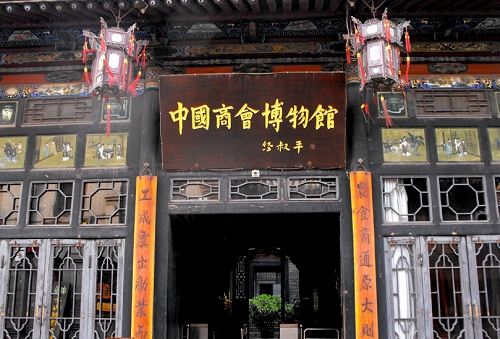Commerce groups linchpin of modern social transition

Museum of Chinese Commercial Association in Pingyao, Shan'xi
By no means a neglected topic, the history of Chinese commercial associations has incrementally edged toward the scholarly spotlight since the 1980s. Both in theme and method, the research has greatly expanded its breadth, while scholars have been dedicatedly compiling historical materials for their successors. It success has hinged on more than sheer volume of output though—monographs and studies have consistently shed light on Chinese economic history, social history and urban history. The questions scholars are asking themselves now are the sort indicative of a thriving field: how to reign in the fast multiplying avenues and choose those most pertinent or promising; and how to refine the theoretical framework and make the best use of historical materials?
From politics to merchant diplomacy
Originally, the first historians to research commercial associations approached the topic as a subfield of history on the 1911 Revolution, explained Zhu Ying, director of the Institute of Modern Chinese History at Central China Normal University. Zhu elaborated that they were driven primarily to assert the capitalist nature of the 1911 Revolution against skepticism from foreign scholarship, which they demonstrated by showing that a self-sustaining, independent capitalist class had emerged in China prior to the revolution.
Professor Qiu Jie from Sun Yat-sen University’s history department confirmed this view, adding that scholar’s interests were evident from their research topics. Initially, research on commercial associations focused on the period around the 1911 Revolution rather than in Republican China, time periods when the associations were likely more developed. This reflects a tendency to analyze commercial associations as part of a “modern Chinese capitalist class” and explore their links to major political incidents.
Another noteworthy topic of research has been the connections of “merchant diplomacy” and commercial associations. Yu Heping, a research fellow from the Institute of Modern History at the Chinese Academy of Social Sciences said that this area has opened new perspectives on a host of issues, such as the colonization of modern China and anti-imperialism, capitalism in modern China, and the history of China’s foreign economic relations diplomacy”.
Theorizing commercial associations
Ma Min, party secretary at the Central China Normal University said that lately there has been a strong push to look at the history of Chinese commercial associations through the lens of different theoretical frameworks. In particular, a lot of papers have applied sociological theories such as modernization theory and social systems theory, while some have used theories from law and political science. Ma noted that scholars have been utilizing these theories to hone in on and explain specific facets of commercial associations, such as their societal forerunners, organizational structures, social function, and connections with other organizations. Scholars have also used some of these theories to examine the relationship between commercial and bureaucratic elements within the associations, and their greater role in urban development and the growth of capitalism in China.
“Consider how much modernization theory, as a general theory of social sciences, offers researchers when they are looking at a societal phenomenon like commercial associations. Modernization theory encourages us to look at the interaction between different social systems and at different levels; it encourages us to look at how these play out in the process of social transformation,” Ma explained.
Modernization theory is just one particularly fruitful explanatory model though. Feng Xiaocai, a history professor from East China Normal University noted that other scholars have viewed the associations as social networks or interest groups, while others have tried to explain their development and interactions using institutional economics. Feng cautioned against being over-eager to employing theories, noting that while they may enrich the research, scholars have to be wary of whether theoretical models really fit the indigenous Chinese situation.
Assembling historical evidence
Naturally, another area scholars of Chinese commercial associations agree could be strengthened is the raw base of historical documents. Zhu Ying pointed out that more primary resources related to commercial associations’ interaction with other groups would help scholars establish a better picture of the variety and diversity of the associations. “Currently, I’d say that scholars have only done a sufficient job collating documents for commercial associations in Tianjin, Suzhou and Shanghai. This leaves a lot of work to be done for industrial associations and commercial associations elsewhere. Collecting and sifting through historical records goes beyond just patching the weak areas of our current understanding. It will help us move to the next level of specificity, looking at commercial associations at the county and township level.”
Feng Xiaocai suggested using digital technology to establish searchable databases. These would both expedite the researcher process and reduce cost, he maintained.
Translated by Feng Daimei
The Chinese version appeared in Chinese Social Sciences Today, No. 451, May 17, 2013
http://www.csstoday.net/Item/75885.aspx
